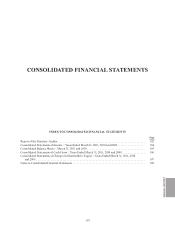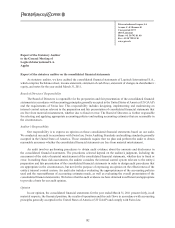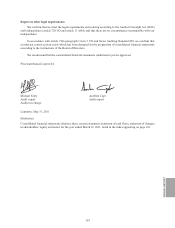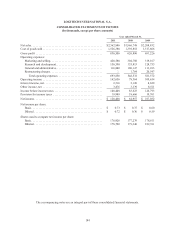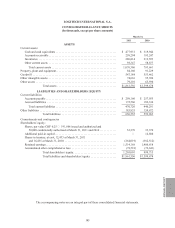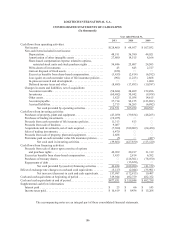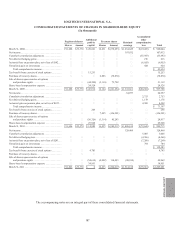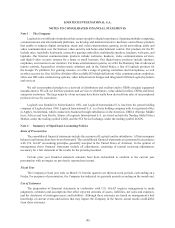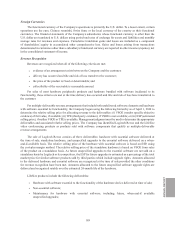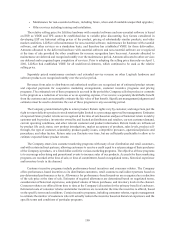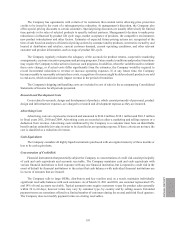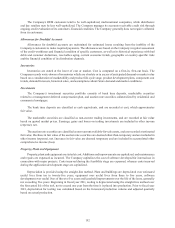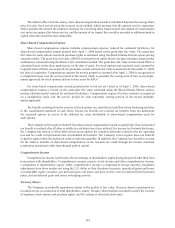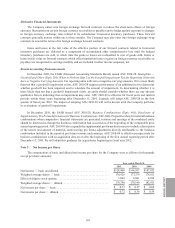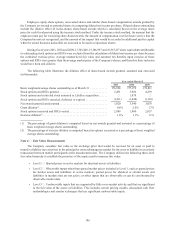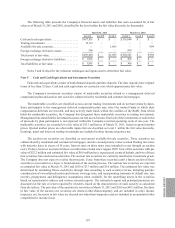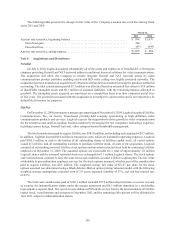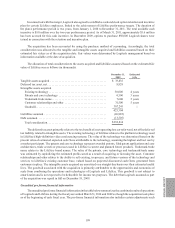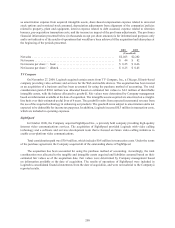Logitech 2011 Annual Report Download - page 202
Download and view the complete annual report
Please find page 202 of the 2011 Logitech annual report below. You can navigate through the pages in the report by either clicking on the pages listed below, or by using the keyword search tool below to find specific information within the annual report.190
• Maintenance for non-essential software, including future, when-and-if available unspecified upgrades;
• Other services including training and installation.
The relative selling price for LifeSize hardware with essential software and non-essential software is based
on ESP, as VSOE and TPE cannot be established due to variable price discounting. Key factors considered in
developing ESP are historical selling prices of the product, pricing of substantially similar products, and other
market conditions. LifeSize sells maintenance for non-essential software, maintenance for hardware with essential
software, and other services on a standalone basis, and therefore has established VSOE for those deliverables.
Amounts allocated to the delivered hardware with essential software and non-essential software are recognized
at the time of sale provided the other conditions for revenue recognition have been met. Amounts allocated to
maintenance are deferred and recognized ratably over the maintenance period. Amounts allocated to other services
are deferred and recognized upon completion of services. Prior to adopting the selling price hierarchy on April 1,
2010, LifeSize had established VSOE for all undelivered elements, which continued to be used as the relative
selling price.
Separately priced maintenance contracts and extended service revenue on other Logitech hardware and
software products are recognized ratably over the service period.
Revenues from sales to distributors and authorized resellers are recognized net of estimated product returns
and expected payments for cooperative marketing arrangements, customer incentive programs and pricing
programs. The estimated cost of these programs is accrued in the period the Company sells the product or commits
to the program as a reduction of revenue or as an operating expense, if we receive a separately identifiable benefit
from the customer and can reasonably estimate the fair value of that benefit. Significant management judgment and
estimates must be used to determine the cost of these programs in any accounting period.
The Company grants limited rights to return product. Return rights vary by customer, and range from just the
right to return defective product to stock rotation rights limited to a percentage approved by management. Estimates
of expected future product returns are recognized at the time of sale based on analyses of historical return trends by
customer and by product, inventories owned by and located at distributors and retailers, current customer demand,
current operating conditions, and other relevant customer and product information. Return trends are influenced
by product life cycle status, new product introductions, market acceptance of products, sales levels, product sell-
through, the type of customer, seasonality, product quality issues, competitive pressures, operational policies and
procedures, and other factors. Return rates can fluctuate over time, but are sufficiently predictable to allow us to
estimate expected future product returns.
The Company enters into customer marketing programs with many of our distribution and retail customers,
and with certain indirect partners, allowing customers to receive a credit equal to a set percentage of their purchases
of the Company’s products, or a fixed dollar credit for various marketing programs. The objective of these programs
is to encourage advertising and promotional events to increase sales of our products. Accruals for these marketing
programs are recorded at the time of sale, or time of commitment, based on negotiated terms, historical experience
and inventory levels in the channel.
Customer incentive programs include performance-based incentives and consumer rebates. The Company
offers performance-based incentives to its distribution customers, retail customers and indirect partners based on
pre-determined performance criteria. Allowances for performance-based incentives are recognized as a reduction
of the sale price at the time of sale. Estimates of required allowances are determined based on negotiated terms,
consideration of historical experience, anticipated volume of future purchases, and inventory levels in the channel.
Consumer rebates are offered from time to time at the Company’s discretion for the primary benefit of end-users.
Estimated costs of consumer rebates and similar incentives are recorded at the time the incentive is offered, based
on the specific terms and conditions. Certain incentive programs, including consumer rebates, require management
to estimate the number of customers who will actually redeem the incentive based on historical experience and the
specific terms and conditions of particular programs.



